- Qualcomm Launches Snapdragon 4 Gen 2 Mobile Platform
- AMD Launches Ryzen PRO 7000 Series Mobile & Desktop Platform
- Intel Launches Sleek Single-Slot Arc Pro A60 Workstation Graphics Card
- NVIDIA Announces Latest Ada Lovelace Additions: GeForce RTX 4060 Ti & RTX 4060
- Maxon Redshift With AMD Radeon GPU Rendering Support Now Available
Microsoft Natural Ergonomic Desktop 7000
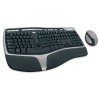
Ergonomic keyboards are one of Microsoft’s specialties, so how does their latest 7000 desktop fare? Notable features include 2.4GHz wireless technology, zoom button, hot-keys, soft palm-rest and also a new mouse that promises 6-months of battery-life on a single charge.
Page 1 – Introduction
First off, let me tell you where I’m coming from. I am one of the few users of natural keyboards on staff, so I will have no problem transitioning to the 7000. That being said, I do remember the first time I tried an ergo keyboard and it confused me and seemed HUGE but I was a very quick convert. Now I am totally useless on a non ergo keyboard. So therefore my review of the 7000 will be coming from someone who is used to a natural keyboard, and not someone who is coming off a straight keyboard.
| This is what I use now: | And this is the 7000: |
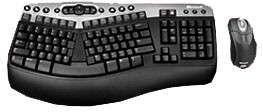 |
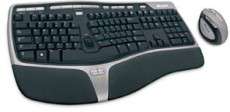 |
One immediate change that can be seen is in the shape of the mouse; the new 7000 has a slightly tilted mouse that hopefully allows for a slightly more comfortable and natural resting of my hand on the mouse itself. I’m also curious, as I have not opened the box yet, as to what the big button in the middle of the keyboard is, as well as the two small buttons in the silver area. Let’s open it up and find out!
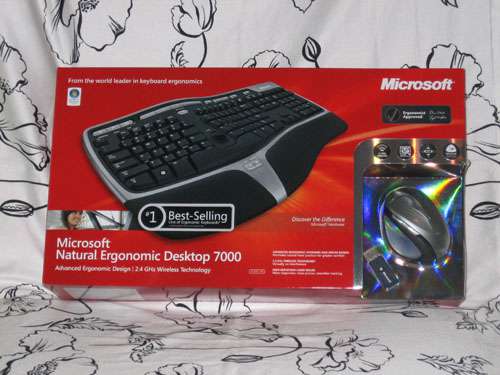
Once I figured out the Chinese box puzzle on how to get the mouse out of the package, I had a mouse, a keyboard, a USB transceiver, a keyboard ‘prop’ for elevating the keyboard, batteries, a generic product guide, software including IntelliType Pro 6.1/6.2 for Mac and IntelliPoint 6.1/6.2 for Mac and visual instructions on how to tilt the keyboard as well as how to properly grip the mouse.
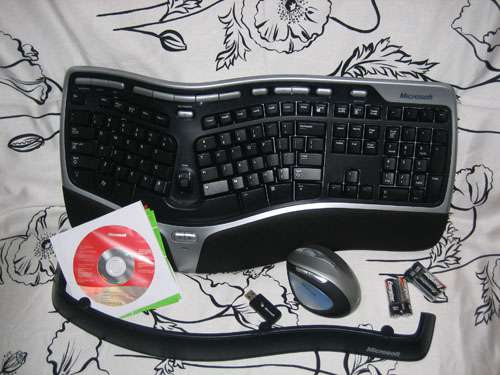
Now it’s time to reboot, and install this keyboard. The next words I type will be on the new keyboard!
“Keyboard not found. Press F1 to continue.“
Hmmm…
Ok that settled, (I forgot to plug in the USB transceiver duh!). My immediate first impressions are mixed. Lets look at the keyboard first.
The support allows you to configure the way the keyboard rests on your desk, and in turn the way your hands rest on the keyboard in four different ways. I started with the support off, and the back props flipped down, so this had the keyboard in its flattest position. This is what I’m used to with my other keyboard so that felt fine, but in all fairness, I wanted to try the other options.
First propping up the back, but without the front support, I felt my wrists were turned backwards a little too much for long term comfort. It didn’t take long for that to become uncomfortable, but then again, a lot of it has to do with the way my arms are supported as well as posture, height relative to the table etc. Next I tried the back supports down with the front supports up, so that the keyboard angled away from me, and it felt a little weird but I’m sure this is probably the most ergonomic way to type, if there really is such a thing.
Lastly I tried with the front support up and the back support up, which jacked the keyboard a good inch and a half up off the table. At first it felt a little strange, and if I could, I’d want to adjust my chair a little so that my elbows are supported on the arms of my chair, level with the keyboard, where now they are level with the table and I feel a little like my elbows are flailing about in the open air. That is currently how I’m using the keyboard, flailing elbows and all.
This is a good place to mention as well, that the black area where the heels of your palms rest, is slightly padded. While I like this, I question how well it will hold up long term.
Here are side views of the four options:
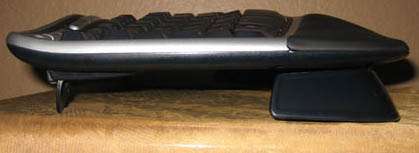
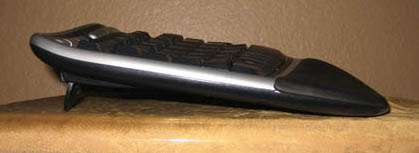
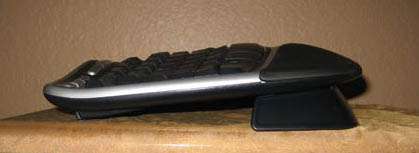
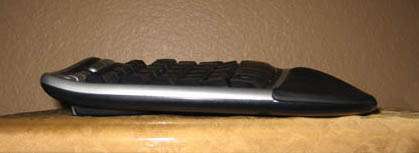
Next, we will take a look at the keyboard.
|
|
Support our efforts! With ad revenue at an all-time low for written websites, we're relying more than ever on reader support to help us continue putting so much effort into this type of content. You can support us by becoming a Patron, or by using our Amazon shopping affiliate links listed through our articles. Thanks for your support!




